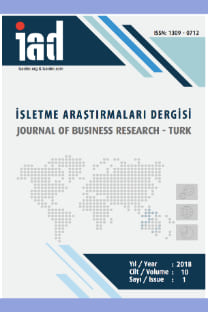Correlates of Turnover: Salary and Bonuses
Correlates of Turnover: Salary and Bonuses
___
- Baker, G., Gibbs, M., & Holmstrom, B. (1994a). The Internal Economics of the Firm: Evidence from Personnel Data. Quarterly Journal of Economics, 109(4), 881-919.
- Baker, G., Gibbs, M., & Holmstrom, B. (1994b). The wage policy of a firm. Quarterly Journal of Economics, 109(4), 921-955.
- Barth, E., & Dale-Olsen, H. (2009). Monopsonistic discrimination, worker turnover, and the gender wage gap. Labour Economics, 16(5), 589-597.
- Bartel, A. P., & Borjas, G. J. (1981). Wage Growth and Job Tunover: An Empirical Analysis. In S. Rosen, Studies in Labor Markets (pp. 65-84). Chicago: University of Chicago Press.
- Belzil, C., & Bognanno, M. (2008). Promotions, Demotions, Halo Effects, and the Earnings Dynamics of American Executives. Journal of Labor Economics, 26(2), 287-310.
- Bernhardt, D. (1995). Strategic promotion and compensation. The Review of Economic Studies, 62(2), 315-339.
- Blakemore, A. E., Low, S. A., & Ormiston, M. B. (1987). Employment Bonuses and Labor Turnover. Journal of Labor Economics, 5(4), S124-S135.
- Burdett, K. (1978). Employee Search and Quits. American Economic Review, 68, 212-220.
- Chiappori, P. A., Salanie, B., & Valentin, J. (1999). Early starters versus late beginners. Journal of Political Economy, 107(4), 731-760.
- Cottini, E., Kato, T., & Westergaard-Nielsen, N. (2011). Adverse workplace conditions, high-involvement work practices and labor turnover: Evidence from Danish linked employer–employee data. Labour Economics, 18(6), 872-880.
- Dale-Olsen, H. (2006). Wages, fringe benefits and worker turnover. Labour economics, 13(1), 87-105.
- DeVaro, J., & Waldman, M. (2012). The Signalling Role of Promotions: Further Theory and Evidence. Journal of Labor Economics, 30(1), 91-147.
- Dohmen, T. J. (2004). Performance, Seniority, and Wages: Formal Salary Systems and Individual Earning Profiles. Labour Economics, 11, 741-763.
- Ekinci, E. (2019). Discretionary bonuses and turnover. Labour Economics, 60, 30-49.
- Ekinci, E., Kauhanen, A., & Waldman, M. (2019). Bonuses and promotion tournaments: Theory and evidence. The Economic Journal, 129(622), 2342-2389.
- Fairburn, J. A., & Malcomson, J. M. (2001). Performance, promotion, and the Peter Principle. The Review of Economic Studies, 68(1), 45-66.
- Fuchs, W. (2015). Subjective Evaluations: Discretionary Bonuses and Feedback Credibility. American Economic Journal: Microeconomics, 7(1), 99-108.
- Galizzi, M., & Lang, K. (1998). Relative Wages, Wage Growth, and Quit Behavior. Journal of Labor Economics, 16(2), 367-391.
- Gautier, P. A., Van den Berg, G. J., Van Ours, J. C., & Ridder, G. (2002). Worker turnover at the firm level and crowding out of lower educated workers. European Economic Review, 46(3), 523-538.
- Gibbs, M. (1995). Incentive Compensation in a Corporate Hierarchy. Journal of Accounting and Economics, 19, 247-277.
- Gibbons, R., & Waldman, M. (1999). A theory of wage and promotion dynamics inside firms. The Quarterly Journal of Economics, 114(4), 1321-1358.
- Gibbons, R., & Waldman, M. (2006). Enriching a theory of wage and promotion dynamics inside firms. Journal of Labor Economics, 24(1), 59-107.
- Jovanovic, B. (1979). Job matching and the theory of turnover. Journal of Political Economy, 87(5), 972-990.
- Kahn, L. B., & Lange, F. (2014). Employer learning, productivity, and the earnings distribution: Evidence from performance measures. The Review of Economic Studies, 81(4), 1575-1613.
- Keith, K., & McWilliams, A. (1995). The Wage Effects of Cumulative Job Mobility. Industrial and Labor Relations Review, 49(1), 121-137.
- Lazear, E. P. (1992). The Job as a Concept. In W. J. Burns, Performance Measurement, Evaluation and Incentives (pp. 183-215). Cambridge, MA: Harvard Business School Press.
- MacDonald, G. M. (1988). Job Mobility in Market Equilibrium. Review of Economic Studies, 55, 153-168.
- McCue, K. (1996). Promotions and wage growth. Journal of Labor Economics, 14(2), 175-209. McLaughlin, K. J. (1991). A theory of quits and layoffs with efficient turnover. Journal of Political Economy, 99(1), 1-30.
- Mortensen, D. T. (1988). Wages, Separations, and Job Tenure: On-the-Job Specific Traning or Matching? Journal of Labor Economics, 6(4), 445-471.
- Munasinghe, L. (2000). Wage growth and the theory of turnover. Journal of Labor Economics, 18(2), 204-220.
- Munasinghe, L. (2006). Expectations matter: Job prospects and turnover dynamics. Labour Economics, 13(5), 1- 21.
- Murphy, K. J., & Zabojnik, J. (2004). CEO Pay and appointments: A market-based explanation for recent trends. American Economic Review, 94(2), 192-196.
- O'Halloran, P. L. (2012). Performance pay and employee turnover. Journal of Economic Studies, 39(6), 653-674.
- Ryu, S., & Jinnai, Y. (2021). Effects of monetary incentives on teacher turnover: A longitudinal analysis. Public Personnel Management, 50(2), 205-231.
- Topel, R. H., & Ward, M. P. (1992). Job Mobility And The Careers of Young Men. Quarterly Journal of Economics, 107(2), 439-479.
- Van der Stede, W. A., Wu, A., & Wu, S. Y. C. (2020). An empirical analysis of employee responses to bonuses and penalties. The Accounting Review, 95(6), 395-412
- ISSN: 1309-0712
- Yayın Aralığı: 4
- Başlangıç: 2009
- Yayıncı: Melih Topaloğlu
Organizasyona Karşı Hissedilen Psikolojik Sahiplenme - İş Performansı İlişkisi: Gıda Sektörü Örneği
Derya ÇEVİK TAŞDEMİR, Gül ÇIKMAZ, Sümeyra CEYHAN
The Effect of Dark Leadership on Organizational Commitment: A Research in The Banking Sector
Yasin ÇAKIREL, Nurbanu BAHADIR
İş Stresinin İşe Yabancılaşma Üzerindeki Etkisi: Örgütsel Destek Algısının Rolü
Tedarik Zinciri ve Bilgi Sistemleri Stratejik Uyumunun Tedarik Zinciri Performansına Etkisi
Halil İbrahim YAZGAN, Mehmet Selami YILDIZ
Kurumsal Psikososyal Risk Etmenleri İş Güvenliğini Nasıl Etkiler: Amprik Bir Çalışma
Güfte CANER AKIN, Derya ÇEVİK TAŞDEMİR
Örgütsel Çift Yönlülük: Teknopark Çalışanları Üzerinde Bir Çalışma
Kişilik Özelliklerinin Yenilikçi Davranış Etkisi Üzerine Bir Araştırma*
Şerafettin SEVİM, Sevcan FIRIN
Konaklama İşletmelerinde Kısıtlar Teorisi Yaklaşımının Uygulanabilirliği Üzerine Bir Araştırma
